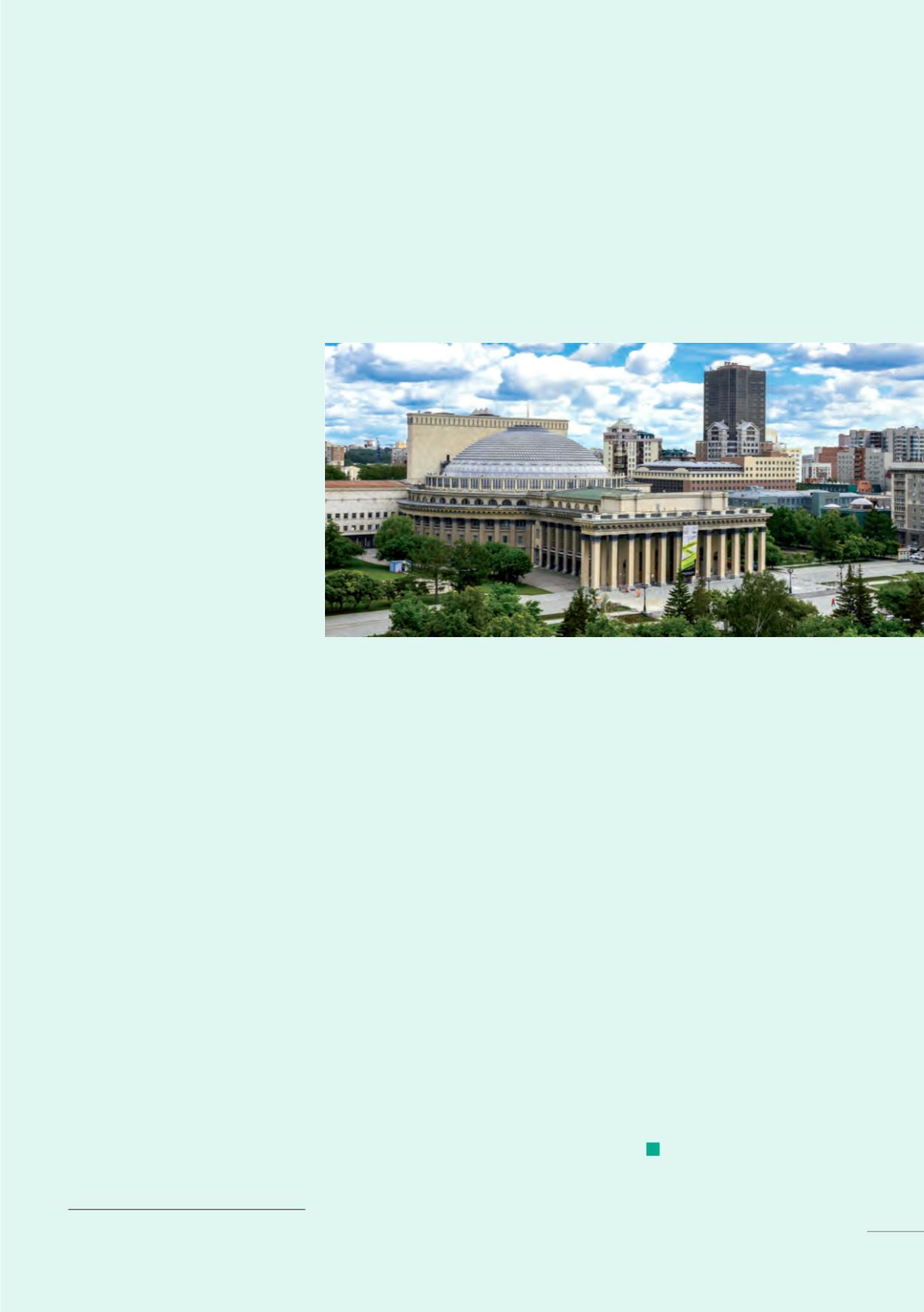
13
Russia - France
R
ussia is the largest country in the
world before Canada. Its total
area covers 11 % of the planet’s
land mass and lies in two continents.
The European part spreads west of the
Urals and the Asian part to the east.
Distances in the country are very great:
150 degrees of latitude, nine time zones,
nine thousand kilometres from theWest
to the east and three thousand kilo-
metres from north to south. It takes
several days to cross the country by
train! Moscow, the capital, which has
12.4 million inhabitants, is in the west,
far from the geographical centre of the
country. Saint Petersburg is among the
largest cities in the Federation, with
5.3 million inhabitants, followed by
Novosibirsk with 1.6 million inhabitants
and Yekaterinburg with 1.5million inha-
bitants. In 2015, 5,223 French residents
were registered at the Moscow consu-
late, 50 in Yekaterinburg and 482 in
Saint Petersburg
(1)
.
The history of Russia is the creation
of a huge empire, which gradually
spread from the tenth century to the
twentieth century. The word ‘ Russia ’
designates an area that was occupied
by different peoples, most of them
East Slavs. As they moved eastwards,
they occupied Siberia, which was
largely uninhabited, and they
Europeanized the northern part of
the Asian continent. They absorbed
some two hundred different nationa-
lities of very varied sizes, both in
Europe and on the margins of the
countries they conquered where
Turkic peoples were predominant
(2)
.
A stable domestic situation
On 18 March 2018, Vladimir Putin
was elected President of the Russian
Federation for the fourth time, with
nearly 76.69% of the votes. He was
sworn in on 7 May 2018 and will hold
office for six years. The United Russia
party has had a significant majority in
Parliament since the September
2016 legislative elections
(3)
.
Since Russia first defined itself as a
modern state when Peter the Great
came to the throne in the 18
th
century,
its leaders have generally favoured
the path of territorial unitarization.
Constitutionally, Russia is a federa-
tion, like the Soviet Union before it,
a choice that seems natural in a
country where more than a hundred
recognized nationalities live.
The eighty-five federated states that
make up the country, which are
known as ‘subjects of the Russian
Federation’, ‘federal subjects’ or
‘regions’, have wide powers. At
the federal level, they are represen-
ted by the Federation Council, the
Parliament’s upper chamber, which
gives them direct influence over
federal legislation.
The area and population of the
federal subjects vary greatly, from
the federal city of Moscow, with
its 1,091 square kilometres and
12,622,000 inhabitants, to the Republic
of Sakha, with 3,103,200 square kilo-
metres and the Nenets Autonomous
Okrug, with only 41,546 inhabitants.
Some regions, like Chechnya, are
highly dependent on federal subsidies
due to their poverty, while others, like
Siberia, benefit from their oil and gas
wealth.
Although regional autonomy is
enshrined in the Constitution,
Vladimir Putin is concentrating more
and more power in his hands.
Legislative reforms, together with
the domination of his United Russia
party in the regional parliaments and
executives, considerably restricts the
ability of the regions to carry out
autonomous policies
(4)
.
‘ Russia's chief characteristic is unity
in immensity ’,
wrote Anatole Leroy-
Beaulieu in 1881. Vladimir Putin has
taken on board this centralistic vision
of Russian political geography, which
forms part of his aptly named
‘ power
vertical ’
.
The Russian Federation, which was created in 1991 following the collapse of the USSR, has a territory
of seventeen million square kilometres, thirty-three times the size of France. Russia is the largest
country in the world and has had to reinvent itself as a multi-ethnic nation state.
The Russian Federation:
a Transcontinental State
Sources: (1): French Embassy in Russia ; (2): Universalis ; (3): diplomatie.gouv.fr ; (4): European Parliament Research Service (EPRS)
©Mariana Designer - AdobeStock
>
Novossibirsk.


